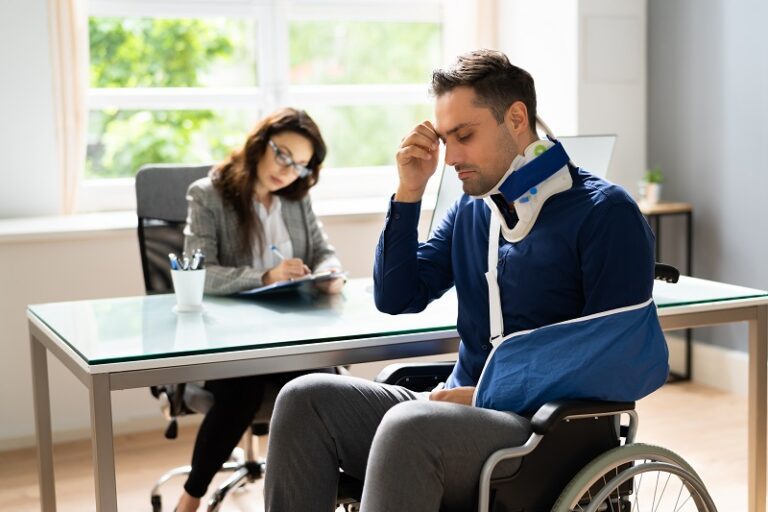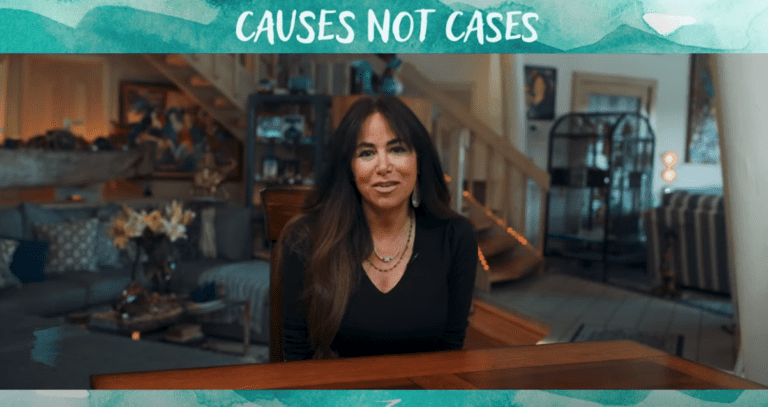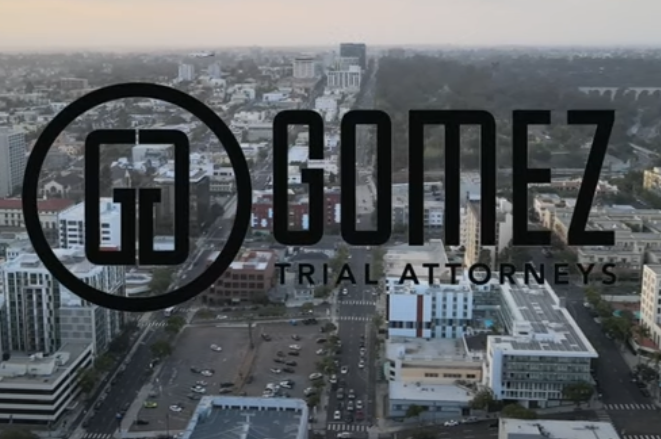Table of Contents
Driving a car comes with responsibilities and risks. According to the National Highway Traffic Safety Administration, there were over 5.2 million traffic crashes reported to the police in 2020. In these crashes, nearly 2.3 million people were injured and more than 3.5 million resulted in property damage.
Who bears fault for the eight common car accident scenarios outlined in this article is important as it has financial and legal consequences. In some cases, who’s at fault is clear, but in other cases, it can be confusing. Fault needs to be determined as the party that bears fault for the accident also bears liability for damage and injury. Injury and damage victims must prove who is at fault in an accident to bring about a claim. Here are eight common car accident scenarios that address fault.
1. Rear-End Collisions
According to the National Highway Traffic Safety Administration, 29% of collisions are rear-end crashes. They are the most frequently occurring type of collision. In most rear-end collisions, the rear or approaching car is liable for the accident. The presumption is that the rear car was following too closely or the driver was unable to react to the car in front of them in time because of a distraction.
There are circumstances in which the lead driver can be at fault or share in the liability. These circumstances can include:
· Merging in front of a car without enough space for the car behind to slow or stop
· Turning into traffic without enough distance for the approaching vehicle to slow or stop
· Backing up into the rear vehicle
· Neglecting to use one’s turning signal when changing lanes
· The lead car’s brake lights are out
There is another scenario in which a car is rear-ended and pushed into another car in front. In this case, the middle car may not be liable even though it hit the car in front of them.
2. T-Bone Collisions
T-bone accidents, also called broadside or side-impact accidents, are defined as one car hitting another in the side. These types of collisions often happen when one car fails to yield in an intersection. Failure to stop at a red light or stop sign, speeding up to get through a yellow light, or mistaking one’s turn at a four-way stop are a few of the common causes of this type of accident. In these cases, liability falls on the driver who failed to yield.
This type of collision can also occur due to brake failure. When this happens, liability can fall on the driver for failing to maintain proper brakes, on the vehicle manufacturer if there is a faulty part, or on the mechanic who worked on the brakes last.
3. An Accident With a Commercial Vehicle
Rideshare vehicles (such as Uber or Lyft), trucks, buses, and vans all use the same roads as personal vehicles. When an accident occurs with a commercial vehicle, more complex issues of liability arise than with a standard auto accident.
Commercial vehicles are an extension of a business and are out on the road carrying out responsibilities on behalf of that business. When an accident occurs with a commercial vehicle, the driver is considered a representative of that business, and the employer can be liable if its employee caused the accident while performing work-related tasks.
Smaller cars are especially vulnerable when a collision occurs with a larger truck or van. There are several common circumstances in which commercial accidents occur:
· Not keeping adequate distance. Trucks need 20% to 40% more distance than cars do to stop.
· Large trucks have more difficulty maneuvering quickly in an accident
· Drowsiness on the part of the commercial driver. Many commercial drivers drive longer stretches than is legally permissible to meet delivery schedules
· Faulty brakes
· Loss of control because of a shift in cargo, poor road conditions, or traveling too fast
When an accident occurs involving a commercial vehicle several parties might be liable including the commercial vehicle driver, the driver’s employer, the company that owns or leases the vehicle, or the vehicle manufacturer if there is a faulty part.
4. Sideswipe Accidents
A sideswipe occurs when two cars traveling in the same direction veer too close to each other and the right side of one vehicle impacts the left side of the other vehicle. This type of collision typically occurs when one of the two vehicles is moving into a lane at an unsafe time.
It can happen when a driver wants to merge intentionally such as when making a lane change, or when merging onto a highway. But it can also occur when a car accidentally drifts over the line into another lane.
A sideswipe can be extremely dangerous when it occurs on a highway where cars are traveling at high speeds. In the vast majority of cases, the car that drifts or merges inappropriately is at fault and bears liability because the driver is obligated to ensure it is safe to merge or change lanes.
5. Drunk Driving Accidents
Although the rate of drunk driving accidents and fatalities has been dropping, alcohol-impaired driving fatalities accounted for 31% of the total vehicle traffic fatalities in 2021. The National Highway Traffic Safety Administration estimates that 13,384 people were killed in accidents where the driver had a blood alcohol level of .08 or higher.
A drunk driver’s impaired ability to judge distances, steer a vehicle, focus on the road, and make sound decisions makes him or her liable for the accident in the vast majority of cases.
In many states dram shop laws and social host liability allow liability to be shared by the intoxicated individual and the establishment or home in which they drank. In California, these laws protect bars, restaurants, and party hosts from liability unless the drinker is underage. Drivers are held directly liable for their own decisions.
6. Left Turn Accidents
Left-turn accidents are fairly common. While they can happen anywhere, they are most likely to occur at intersections and in urban and suburban areas where there is a higher volume of traffic. These accidents can also occur at intersections where visibility is poor or traffic signals are not clear.
Because a left turn involves crossing over one or more lanes of traffic against cars that have the right of way, determining fault in this type of accident is seldom difficult. The turning vehicle almost always bears the liability because that driver has a legal obligation to wait until it is completely safe to make the turn. The exception to this is when the oncoming vehicle is speeding, or runs a red light or stop sign.
7. Head-On Collisions
A head-on collision can occur between two moving vehicles that strike each other directly from the front while going in opposite directions or it can happen when a vehicle drives directly into a stationary object such as a road barrier or a pole.
Head-on collisions are not the most common type of crash but they are among the most dangerous. Because the two vehicles are driving at cross-purposes, the impact is magnified. And, when driving at highway speeds, a head-on collision is more likely to cause severe injuries and death than any other type of accident.
Head-on collisions most often occur because of:
· Distracted drivers who are not paying full attention because they are texting, talking on the phone, or rubbernecking.
· Tired drivers who close their eyes or might even fall asleep at the wheel
· Passing a car without enough room to complete the pass.
· Mistakenly driving the wrong way on a one-way road or entering the highway in the wrong direction
· Driving recklessly and losing control of the vehicle
In most cases, the driver in the wrong lane is liable for the head-on collision.
8. Aggressive Driving Accidents
People who get behind the wheel while frustrated and impatient can be a danger to themselves and others. Also characterized as road rage, aggressive driving includes speeding, weaving in and out of traffic, changing lanes without signaling, tailgating, chasing drivers, cutting in front of drivers, illegal passing, horn honking, flashing headlights, cursing and shouting, and more.
According to 2019 data from the AAA Foundation for Traffic Safety, almost 80% of drivers said they expressed anger, aggression, or road rage behind the wheel at least once within the previous 30 days.
Most often, aggressive drivers bear the liability. However, there are times when the liability is shared. An example is if the other driver responds with aggression and escalates the situation.
Why Fault Matters
Determining who is at fault when an accident happens is what insurers, parties to litigation, and courts use to determine who is responsible for injuries and damages caused by the accident.
Being at fault in an accident will also affect the cost of future insurance premiums, depending on your driving history. Even in places where there is no-fault insurance, the person at fault will be affected by the outcome. No-fault insurance simply means that an insurance company will pay the claim no matter who is found at fault, not that there is no fault.
FAQs
What is the most common car accident?
The National Highway Traffic Safety Administration reports that rear-end collisions are the most common type of accident. While rear-end accidents can occur anywhere, it is most likely to occur at stoplights where a vehicle fails to stop behind a car in time, in parking lots where cars are frequently stopping and starting a lot, and on the freeway when there is heavy traffic and cars are starting and stopping frequently.
How many collisions actually happen in most crashes?
There are three collisions in every crash. According to the Montana Department of Transportation, there is the vehicle collision, human collision, and internal collision. A vehicle collision is the actual collision between two vehicles or between a vehicle and an object. The human collision occurs when his or her movement is met by a stationary object within the vehicle. An internal collision is one in which internal organs impact other organs, bones, or the skull.
How should you describe a car accident for insurance?
Explain the car accident truthfully and in the simplest terms. Outline the facts without speculation. If you are unsure of a detail, do not guess. Say you are unsure. Do not admit fault as that is not for you to determine, even if you suspect that you contributed to the accident.
How should you describe vehicle damage?
When describing vehicle damage to insurance, describe what you can see, and send them the photos you took. The actual damage will need to be assessed by a mechanic and insurance adjuster.
As a rule, vehicle damage is put into three categories:
1. Minor Damage. Small scratches, scrapes, dents, and broken headlights are examples of minor damage. Minor damage does not interfere with your car’s functioning and is mostly cosmetic.
2. Moderate Damage. Larger dents, deep scratches, and broken glass are examples of moderate damage. And, you might experience function impairment such as being unable to open the trunk or car door. Moderate damage is damage that goes beyond cosmetics and has to be repaired. With moderate damage, the airbags may have deployed.
3. Severe Damage. This category includes broken or bent axles or frames, pieces that have come off the vehicle, and crushed parts. With severe damage, the airbags would have deployed. Rolling your vehicle, getting hit head-on, or getting T-boned in an intersection are often scenarios where severe vehicle damage occurs.
How should you describe car accident injuries?
Do not tell the police or insurance company that you are unharmed as many people don’t develop symptoms right away. The Mayo Clinic notes that whiplash can take weeks to fully manifest.
Instead, let them know you are seeing a doctor. Insurers are looking to give you the least compensation possible. If you say statements such as “I was relieved to realize I was okay”, they will downplay the severity of your injuries prematurely. When asked how you feel, tell them you’d rather not discuss that until your doctor has a chance to assess your condition.
Let Gomez Trial Attorneys Help
Determining if you need an attorney after a car accident depends on your level of comfort navigating the claims process alone. It also depends on how serious the collision is, and if you, a passenger, or a person in the other car sustained serious injuries.
Our experienced attorneys can inform you of your legal rights, advise you on the process, help determine liability, and steer you through any potential litigation. An attorney can also help investigate the collision, gather evidence to demonstrate the other driver’s liability and help negotiate with insurers on your behalf. Many accident victims do not realize that they are eligible to be compensated for medical expenses, lost income, and other accident-related expenses.
Don’t accept a settlement that is far less than what you are fully entitled to in your claim. The insurance company for the at-fault driver is not going to offer you the full value of what you are entitled to unless you pursue it. We offer no-cost consultations to help accident victims understand their rights and options. Contact Gomez Trial Lawyers today for a free consultation by calling 866-TRIAL LAW (866-874-2552) or by contacting us online.







